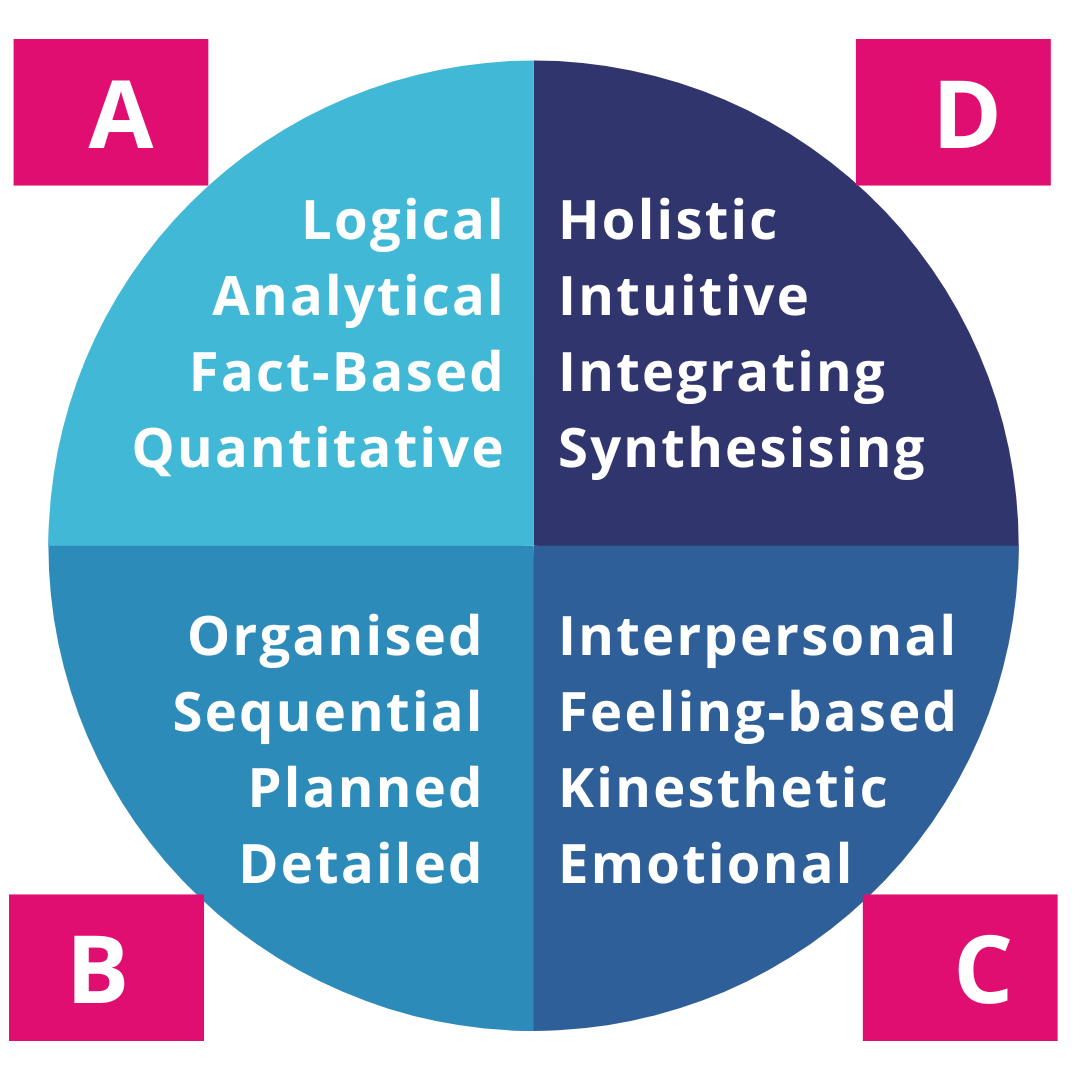Communicating at work - whether it’s virtual, face-to-face, in large groups or in one-on-ones, it’s something we do every day. And most often it is a given that in order to successfully and collaboratively work in a team, and be effective in client conversations, you need to be a good communicator.
In this blog, we are going to talk about the Herrmann Brain Dominance Instrument, and the ways to implement it in your life. Let’s dive in!
How to Be an Effective Communicator?
The 3 qualities of a good communicator are empathy, subtlety, and knowledge.
Empathise with others to better understand their feelings or concerns; be thoughtful in your communications so that you don’t come across as blunt in your delivery. And lastly - know what you're talking about!
Team Parity recently participated in an activity using the Herrmann Brain Dominance Indicator (HBDI) model where we found out what our natural communication preferences were. This was really interesting as it allowed us to see individual preferences, as well as how we stood as a team. Studies show that diverse ‘whole-brained’ teams are 66% more effective than homogeneous teams.
Herrmann Brain Dominance Instrument
The Herrmann Brain Dominance Instrument is a four-colour, four-quadrant model representing the ‘whole brain’. Each quadrant is a type of communicator. The idea behind the model is that if you understand what someone’s communications preference is, you can adapt your style to theirs so that the conversation is more impactful.

What are the Herrmann four quadrants of the brain?
Here is the Herrmann Brain Dominance Instrument four-colour, four-quadrant model:
Blue: Quadrant 1
There are the Blues – the fact-based area of the brain, who often look for the ‘what’ in a situation. They have a strong logical and rational side, most often highly technical, and a lover of numbers.
The best way to approach or engage with a Blue professional, would be to have your facts ready, have a clear objective for any meetings, and stay relevant to the topic up for discussion – get straight to the point!
Green: Quadrant 2
Greens make up the form-based area of the brain and are often most interested in the ‘how’ of any situation they are in or presented with. They are organised, methodical, and detailed.
In a meeting with a Green professional, the more details the better. Have a plan of how we come to plan x, how we then get to x, what are the steps to get to x, what happens after x etc.
Red: Quadrant 3
The Reds make up the feelings-based area of the brain, and they like to know the ‘who’ in any situation – they are personable, relationship-driven, and often very warm and engaging.
When sitting down with a Red professional, take the time to build rapport and get to know them before jumping straight into the facts – don’t treat them like a transaction.
Yellow: Quadrant 4
Yellows make up the future-based area of the brain. Always thinking ahead, Yellow is often full of ideas and is highly imaginative and creative. They like to understand the ‘why’.
When engaging with a Yellow professional, don’t be afraid to talk about the bigger picture and future plans with them.
If you’re setting them a task to do, make sure they understand the ‘why’ behind the task at hand and the role they play – this will help to reign in the ever imaginative and ideas-driven Yellow to focus on the details.
What is Cognitive Diversity (or diversity of thoughts)?
Cognitive Diversity is simply the variety of thought processes within a team. It’s the different ways that people think and approach problems. This can be due to a variety of factors, such as gender, culture, education, age and experience.
Teams that have better cognitive diversity are more innovative and are better at solving complex problems. They are also more effective at recognising and avoiding cognitive biases.
What is the Herrmann Brain Dominance Instrument (HBDI) test/questionnaire?
You can Assess your team's productivity in less than 3 minutes by taking the HBDI Assessment from the Think Hermann website. The analysis can help you diagnose the cognitive diversity gaps that are contributing to productivity slack.
The Herrmann Brain Dominance Instrument questionnaire is designed to help individuals understand their own thinking preferences and how those preferences influence their decision-making. It is also a great tool that can be used for work teams as it can identify and analyse cognitive diversity across the team, and increase performance and efficacy by making workers aware of their strengths. This can in turn result in improvements in the way individuals/teams work - namely making better decisions and solving problems creatively.
One can also use this model while preparing for interview answers and questions to show the recruiter about your variegated knowledge.
Although you can definitely be a mixture of the four quadrants often you will find yourself leaning towards a preferred colour/quadrant. (Fun fact: Parity at the time consisted of 3 Blue, 4 Green, 3 Red, and 3 Yellow! And me? 70% Yellow and 30% Red! Zero sign of any Blue over here).
In conclusion, they say opposites not only attract but complement each other and it’s obvious that we need this diverse and varied mix within teams that reflect clients in order to best communicate. This ensures a mix of ideas, new ways of thinking, and different approaches to roadblocks big and small.
For hiring managers and professionals with large teams, diversity is likely a big part of your hiring process already. But diversity in an organisation should go beyond race, gender, and ethnicity. Diversity of thought will ensure your teams are balanced and teams will prove more efficient, by working together and considering more options, and making better decisions!
Ai Iwami is a Marketing, Communications, and Digital Specialist Consultant at Parity Consulting, beach lover, margarita drinker, and mum to a toddler and cat. Ai specialises in placing professionals in Marketing, Communications, and Digital roles across wealth management. She can be contacted at aiwami@parityconsulting.com.au or +61 451 193 774 for a confidential discussion.

